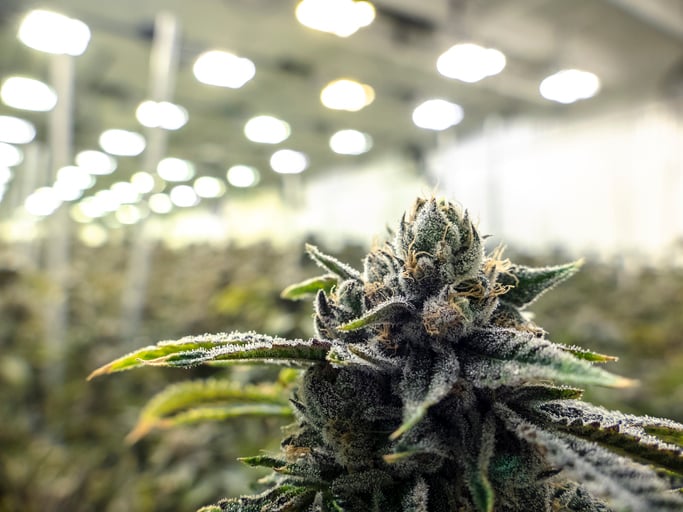A lot can happen in five years. Consider, for example, that five years ago Canopy Growth (CGC +53.98%) didn't exist. The company began operations in 2014 -- first operating as Tweed Marijuana before changing its name to Canopy Growth in 2015. Now, Canopy reigns as the largest marijuana grower in the world by market cap.
Over the last five years, Canopy Growth has benefited from new regulations for the Canadian medical marijuana market, the opening of the Canadian recreational marijuana market, and the legalization of medical marijuana in key countries across the world. It attracted a huge investment from large alcoholic-beverage maker Constellation Brands (STZ 1.42%). But where will Canopy Growth be five years from now?

Image source: Getty Images.
What will make the difference
The future for Canopy Growth could look very different depending on several factors. Perhaps the most important factor of all is just how big the global marijuana market will become over the next five years.
It's important to remember that most marijuana markets are only in their early stages. Canada's legal recreational marijuana market opened for business in October 2018. Germany legalized medical marijuana in 2017. The United Kingdom is just getting started with its medical marijuana market. These relatively new markets could grow more slowly or more quickly than expected.
There's also the wild card of which new markets will open across the world over the next few years. In just the last few months, for example, South Korea and Thailand have somewhat surprisingly legalized medical marijuana. And Mexico's Supreme Court overturned the country's ban on recreational marijuana, opening the door for full legalization in the near future.
The biggie, though, is the United States. Marijuana remains illegal at the federal level in the U.S., but hemp (which is cannabis that contains low levels of the psychoactive compound THC) was recently legalized. This will allow Canopy Growth to set up shop for the first time in the U.S..
Of course, the cannabis industry is bigger than just sales of cannabis flower and oils. Canopy Growth co-CEO Bruce Linton likes to talk about cannabis disrupting multiple big markets that today rake in billions of dollars per year. He includes beverages, opioids, sleep-aid drugs, and veterinary products on the list. How much these industries can actually be disrupted by cannabis will greatly impact what Canopy Growth looks like five years from now.
All of these factors focus on the demand for cannabis products. Supply is important as well. Canopy Growth and its peers are busy cranking up production capacity. If they meet their projections, Canada will face a supply glut in a few years. That means that international markets and the ancillary markets that Linton hopes to disrupt will be even more critical than they are now.
A wide variety of potential outcomes
If you're a pessimist, you could probably envision demand increasing more slowly than supply over the next five years. That could create a scenario where Canopy Growth must compete primarily on price. Such a commoditized market is exactly what the company doesn't want to see.
Canopy's size would likely mean that it could survive. But thriving could be another story in the bleakest potential future for the company.
On the other extreme, though, Canopy Growth could flourish. Global demand could soar as major countries across the world legalize medical marijuana. Canada's recreational marijuana market could exceed expectations. And the U.S. could be an even greater opportunity than predicted for Canopy Growth if efforts to allow states to enforce their own marijuana laws succeed.
Bruce Linton's prediction of disrupting major markets could prove to be prescient. It's not hard to imagine a future in which Constellation Brands and Canopy Growth market multiple cannabis-infused beverages in Canada and beverages containing hemp-based cannabidiol (CBD) in the U.S. Cannabis products could also become attractive alternatives to opioids and currently available sleep-aid drugs.
There are several reasons why Canopy Growth would probably be at the forefront of the global cannabis industry in this rosy scenario. The company claims one of the largest production capacities in the industry. Canopy's international reach is already impressive. And its relationship with Constellation (and big cash stockpile resulting from that relationship) puts Canopy in a different league than most of its peers.
Most likely scenario
It's impossible to know for sure what the future holds. My best guess is that Canopy Growth won't exist five years from now -- at least not as a stand-alone entity.
I think that the next few years will hold more good news than bad news for the cannabis industry. In particular, my hunch is that the U.S. will recognize state marijuana laws at the federal level. That will open the way for Canopy Growth to compete in the huge U.S. marijuana market, in addition to the company's entrance into the U.S. hemp-based CBD market.
With this positive scenario unfolding, my prediction is that Constellation Brands will decide to exercise its options to gain a controlling interest in Canopy Growth. This move is probably at least a couple of years away, but I think the odds are pretty high that the Canopy Growth of 2023 will be a subsidiary of Constellation Brands. And investors who bought and held this top marijuana stock will likely be significantly wealthier.






